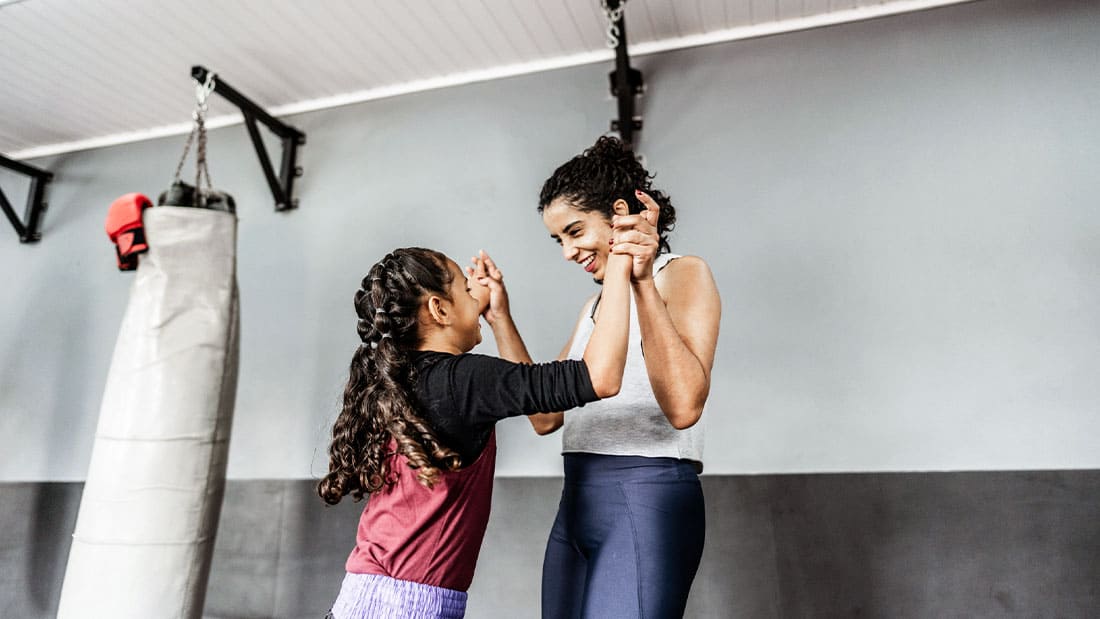Perfect Pull-Up Technique
I’ve trained athletes for almost 10 years and rarely do I see perfect Pull-Up technique. I’d say one in 100 people do Pull-Ups correctly. Most people’s Pull-Ups lack full range of motion, are uncontrolled and even dangerous. People become too focused with trying to get their head up to the bar. They forget about what the rest of their body is doing. And they’re obsessed with trendy and extreme—or in my opinion, stupid—exercises, like the Kip-Up or Muscle-Up.
How many times have you seen a guy stop with his elbows flexed a third of the way from the bottom? What about the infamous ladder Pull-Up? This is more commonly seen among beginners, but I know you’ve seen it. The guy’s feet are uncontrollably kicking out in front of him while he tries to lift his head over the bar. From a side view, it looks like someone is climbing an invisible ladder.
Let’s stop the shenanigans. I will teach you how to perform the perfect Pull-Up.
With most lifts, it’s safe to say that when you are pulling, you’re engaging your back and biceps. When your elbows flex, as they do in the Chin-Up, your biceps are working. As for your back (latissimus dorsi), one of the three ways to engage this muscle is to adduct the humerus, like when you lower your arms during a jumping jack.
RELATED: Do More Pull-Ups
Pull-Up Technique
For a perfect Pull-Up, you need to engage your core and glutes to stabilize the hip complex. Squeeze your glutes. This will limit the forward sway you see when people climb that imaginary ladder.
This technique will strengthen two stereotypically underdeveloped muscles and give you the proper form for the “perfect Pull-Up.”
Types of Pull-Ups
- Band Pull-Ups. These require the assistance of a friend. Maybe you don’t have the proper equipment and/or a spotter to help you, so begin by doing a negative. Jump up so your chin is above the bar. As slowly as you can, lower yourself all the way down until your arms are completely straight. That’s one rep.
- Chin-Ups. You’ll be able to perform one of these before a regular Pull-Up. Side note: If you cannot perform 10 Chin-Ups, stop doing Bicep Curls. This multi-joint exercise is far superior and will enhance the size of your biceps just as efficiently as the more popular biceps exercise. After you have accomplished 10 Chin-Ups, you can go back to your favorite beach muscle exercise.
- Pull-Ups. Hands placed shoulder-width apart with no momentum.
- Neutral Grip Pull-Ups. You’ll need to find a bar with handles, because these Pull-Ups are performed with the same grip as hammer curls.
- Dead-Hang Pull-Ups. Grasp the bar with your arms completely straight and your shoulders relaxed. Flex your elbows and pull yourself up until your chin goes over the bar.
- Corn on the Cob. Perform No. 5, but at the top, sway your chin across to your right hand, then sway over to your left hand. Return to the center and lower down in a controlled manner. A bystander may say, “Hey, it looks like that kid is eating corn on the cob!”
- TNT Pull-Ups (time under tension). Begin in a Dead-Hang position and perform a regular Pull-Up. Instead of pulling yourself up at normal speed, pull yourself up in a slow and controlled manner. Aim for 3-5 seconds up and 3-5 seconds down. Your hips should not move forward. Your body should rise up in a straight line.
If you have progressed properly from 1-7 and you can perform five Dead-Hang Pull-Ups, then are you ready to kip or perform a Muscle-Up. In my opinion, these exercises are for show and do not test performance and/or functionality.
Can you do more than 10 Pull-Ups? If so, and if you want to be a true stud and show off what you got, then try these out:
Explosive Pull-Ups
Begin in the dead-hang position. I like to close my eyes and imagine my brain recruiting my back and biceps with a tight core and hip complex. Take a deep breath in and explode up as fast as you can. Perform one rep at maximal velocity. Rest for 30-60 seconds. Repeat 5-10 sets.
This causes maximal neuromuscular communication and recruitment for your powerful fast-twitch muscle fibers. I’m not impressed with someone who can do 10 or more Pull-Ups at 75% of 1RM. Why settle for 75 percent of what you are capable of? In order to perform better and at peak levels, you need to learn how to maximize the communication between your nervous system and your muscles. This exercise teaches that.
The ability to pull your body weight off the ground and above a bar is a gift. Don’t ruin it by performing the exercise improperly. If you cannot do one, start at Step 1 and perform them weekly. I suggest beginners aim for three Pull-Up workouts a week, performing three sets of three negatives. As you become stronger, shoot for five days a week for five sets of 10.
Pull-Ups are about quality, not quantity. I couldn’t care less if you can perform 20 mediocre Pull-Ups. Come talk to me when you can perform five sets of 10 “perfect Pull-Ups.”
Read More:
[cf]skyword_tracking_tag[/cf]RECOMMENDED FOR YOU
MOST POPULAR
Perfect Pull-Up Technique
I’ve trained athletes for almost 10 years and rarely do I see perfect Pull-Up technique. I’d say one in 100 people do Pull-Ups correctly. Most people’s Pull-Ups lack full range of motion, are uncontrolled and even dangerous. People become too focused with trying to get their head up to the bar. They forget about what the rest of their body is doing. And they’re obsessed with trendy and extreme—or in my opinion, stupid—exercises, like the Kip-Up or Muscle-Up.
How many times have you seen a guy stop with his elbows flexed a third of the way from the bottom? What about the infamous ladder Pull-Up? This is more commonly seen among beginners, but I know you’ve seen it. The guy’s feet are uncontrollably kicking out in front of him while he tries to lift his head over the bar. From a side view, it looks like someone is climbing an invisible ladder.
Let’s stop the shenanigans. I will teach you how to perform the perfect Pull-Up.
With most lifts, it’s safe to say that when you are pulling, you’re engaging your back and biceps. When your elbows flex, as they do in the Chin-Up, your biceps are working. As for your back (latissimus dorsi), one of the three ways to engage this muscle is to adduct the humerus, like when you lower your arms during a jumping jack.
RELATED: Do More Pull-Ups
Pull-Up Technique
For a perfect Pull-Up, you need to engage your core and glutes to stabilize the hip complex. Squeeze your glutes. This will limit the forward sway you see when people climb that imaginary ladder.
This technique will strengthen two stereotypically underdeveloped muscles and give you the proper form for the “perfect Pull-Up.”
Types of Pull-Ups
- Band Pull-Ups. These require the assistance of a friend. Maybe you don’t have the proper equipment and/or a spotter to help you, so begin by doing a negative. Jump up so your chin is above the bar. As slowly as you can, lower yourself all the way down until your arms are completely straight. That’s one rep.
- Chin-Ups. You’ll be able to perform one of these before a regular Pull-Up. Side note: If you cannot perform 10 Chin-Ups, stop doing Bicep Curls. This multi-joint exercise is far superior and will enhance the size of your biceps just as efficiently as the more popular biceps exercise. After you have accomplished 10 Chin-Ups, you can go back to your favorite beach muscle exercise.
- Pull-Ups. Hands placed shoulder-width apart with no momentum.
- Neutral Grip Pull-Ups. You’ll need to find a bar with handles, because these Pull-Ups are performed with the same grip as hammer curls.
- Dead-Hang Pull-Ups. Grasp the bar with your arms completely straight and your shoulders relaxed. Flex your elbows and pull yourself up until your chin goes over the bar.
- Corn on the Cob. Perform No. 5, but at the top, sway your chin across to your right hand, then sway over to your left hand. Return to the center and lower down in a controlled manner. A bystander may say, “Hey, it looks like that kid is eating corn on the cob!”
- TNT Pull-Ups (time under tension). Begin in a Dead-Hang position and perform a regular Pull-Up. Instead of pulling yourself up at normal speed, pull yourself up in a slow and controlled manner. Aim for 3-5 seconds up and 3-5 seconds down. Your hips should not move forward. Your body should rise up in a straight line.
If you have progressed properly from 1-7 and you can perform five Dead-Hang Pull-Ups, then are you ready to kip or perform a Muscle-Up. In my opinion, these exercises are for show and do not test performance and/or functionality.
Can you do more than 10 Pull-Ups? If so, and if you want to be a true stud and show off what you got, then try these out:
Explosive Pull-Ups
Begin in the dead-hang position. I like to close my eyes and imagine my brain recruiting my back and biceps with a tight core and hip complex. Take a deep breath in and explode up as fast as you can. Perform one rep at maximal velocity. Rest for 30-60 seconds. Repeat 5-10 sets.
This causes maximal neuromuscular communication and recruitment for your powerful fast-twitch muscle fibers. I’m not impressed with someone who can do 10 or more Pull-Ups at 75% of 1RM. Why settle for 75 percent of what you are capable of? In order to perform better and at peak levels, you need to learn how to maximize the communication between your nervous system and your muscles. This exercise teaches that.
The ability to pull your body weight off the ground and above a bar is a gift. Don’t ruin it by performing the exercise improperly. If you cannot do one, start at Step 1 and perform them weekly. I suggest beginners aim for three Pull-Up workouts a week, performing three sets of three negatives. As you become stronger, shoot for five days a week for five sets of 10.
Pull-Ups are about quality, not quantity. I couldn’t care less if you can perform 20 mediocre Pull-Ups. Come talk to me when you can perform five sets of 10 “perfect Pull-Ups.”
Read More:










